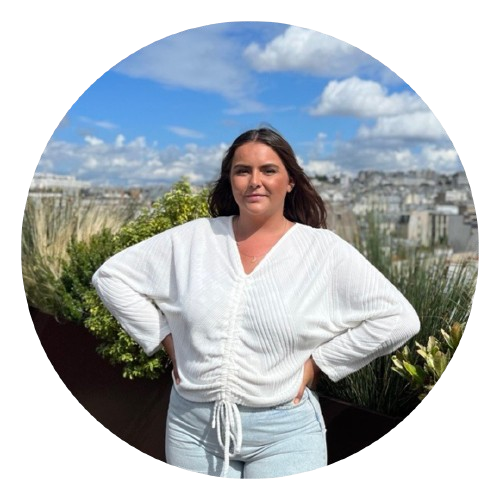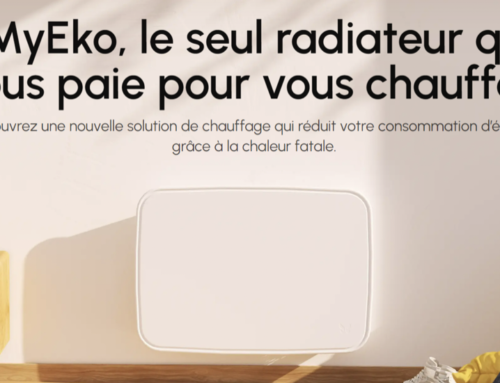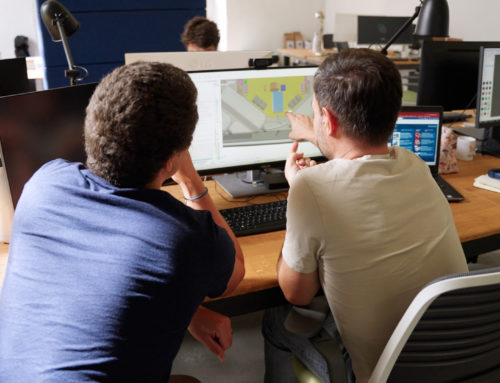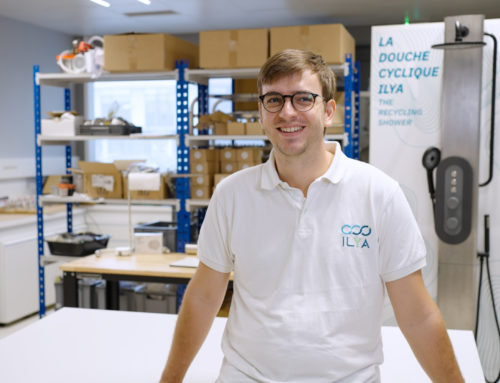Interview : MYAGO 3D
Let’s meet Gabrielle Sebti, founder of MYAGO 3D.
Lucie P-L: “Could you introduce yourself?”
Gabrielle S: “My name is Gabrielle SEBTI, I’m a mother of 3, I live in Blois and I’ve gradually become interested in everything to do with computer graphics and drawing. Gradually, I moved on to all things CAD, i.e. modeling objects in 3D. I put into volume what I usually did in 2D. Gradually I became interested in CAD, so I invested in a 3D printer with my husband, and that’s where it all started.
So I started making little objects, designing them, modeling them, and then I was approached by our friends who asked for pieces. We were also approached by my husband’s company, at first, and then things really took off. In the end, I decided to set up this company offering problem-solving services through design and 3D printing. The aim is to help individuals and companies solve their personal problems.
My business is problem solving through design and 3D printing. So we’re here to support and advise companies and individuals on their internal issues. In other words: a broken part, an innovative part to be designed, a project to be carried out with a starting idea, and we’re there either to support them or to carry out the project. So it can also be modeling, prototyping and so on.
We also have an emergency service, called “3DL”, which enables us to react quickly to help companies deal with broken parts or urgent production requirements. We also have a catalog, for individuals and businesses, of parts for everyday use that can be used.”
L: “What are your needs and challenges in terms of 3D design?”
G : “It’s about being able to use software that’s responsive and easy to use. Which would also enable me to design objects for industry, design, healthcare and so on. So something that allows me to design and then produce all my objects.
An easy-to-use, high-performance tool that’s compatible with what manufacturers use.”
L: “Why did you choose 3DEXPERIENCE?”
G: “That’s why we started with CATIA V5, and then 3DEXPERIENCE, which is a logical extension of this compatibility.
Because often 3D software isn’t always compatible (you can always find ways) and that can cause problems (not being able to rectify and modify files).”
L: “In your opinion, what are the two-three aspects that characterize the platform?”
G : “My first benefit is that I can clearly work on the same account both in my company and at home if I haven’t had time to finish it. And I didn’t need to take out 36 licenses to have one on each workstation. So it’s a great advantage. This allows me to switch between several devices. In my opinion, this is an undeniable advantage.
It’s a very user-friendly program, with little shortcuts and things that are very practical to use and that don’t exist in CATIA , for example (if only to write text, for example). Personally, I need to make a lot of changes, especially to the branding (for customization and made-to-measure). So for me it’s more suitable!
I’m on my own, so I don’t need to share. Then there’s my husband, who can also work on it remotely from his computer (in another room or another part of town!). He can therefore open and modify it. It’s this dematerialization that’s really interesting and helps us to organize and manage our time better.”
L: “A few words about your XDI experience?”
G: “File management needs a bit of improvement (for recording, it’s a bit complex). That’s the downside. What I also like is that it’s organized in the form of little icons, so it’s pretty tidy. We can afford to have our favorites, to organize the features that are present according to our needs. And you don’t have to search for them in a list, you can actually highlight them, so that’s pretty nice.
There’s also the organization of the files, as I said, there are positives and negatives like everything else. Once everything’s organized and tidied up, it’s much simpler (all you have to do is move, click, etc.). And it’s easy to switch from one file to another. Instead, I have very positive feedback from the platform .”
L: “What do you think is the platform’s added value? “
G: “The good thing is that we can add options as we go along, according to our needs. Functions that can be tested first, and then we can adjust the applications as we go along, according to our needs. This adaptability means that it’s not a big package, it’s application by application, so we end up with a tool that’s adapted to our needs and not a global package or a particular offer.”
L: “A few words about your XDI experience?”
G: “It wasn’t easy at first because it was a different way of working, so I had a bit of difficulty at first. The mistake I made at first was not to ask the XDI staff. There’s a whole learning curve, it’s a different way of working and you have to adapt to it and not be afraid to ask for help and advice (which I didn’t do at first because I wasn’t used to it). Little by little I’m getting the hang of it and it’s more interactive.
Kilian was able to guide me through the file management process. He showed me what to use and how to use it. He gave me good advice, as he also pointed me in the direction of applications that enabled me to adapt my tools to what I wanted to do. In fact, you shouldn’t be afraid to talk and ask for help when you’re in a bind.
I’m very satisfied, there are still one or two things I can’t do, but I’m on the case with Kilian!
Finally I think you really have to help at the beginning with managing the platform because it’s not that simple, there’s a lot you can do!”



